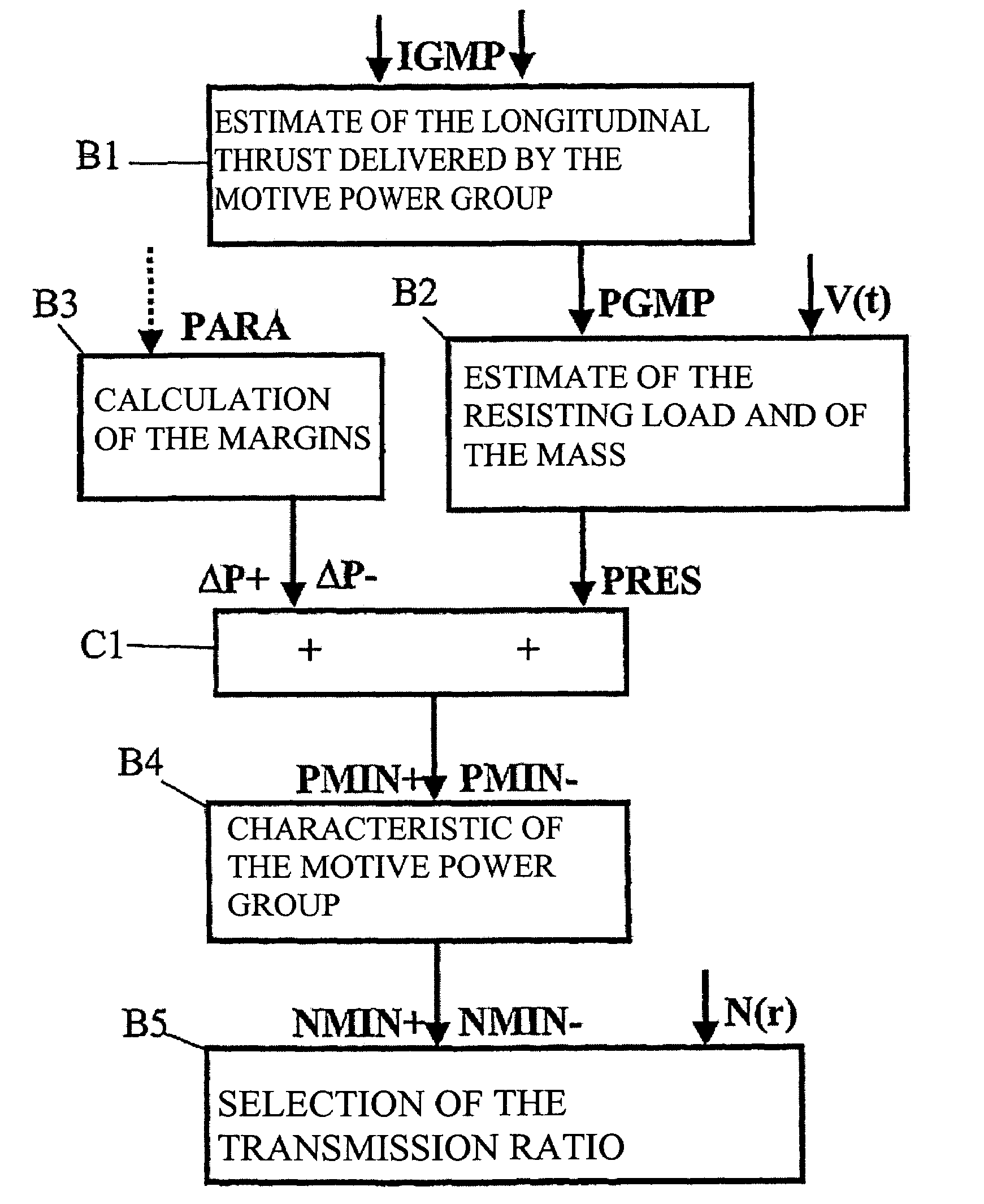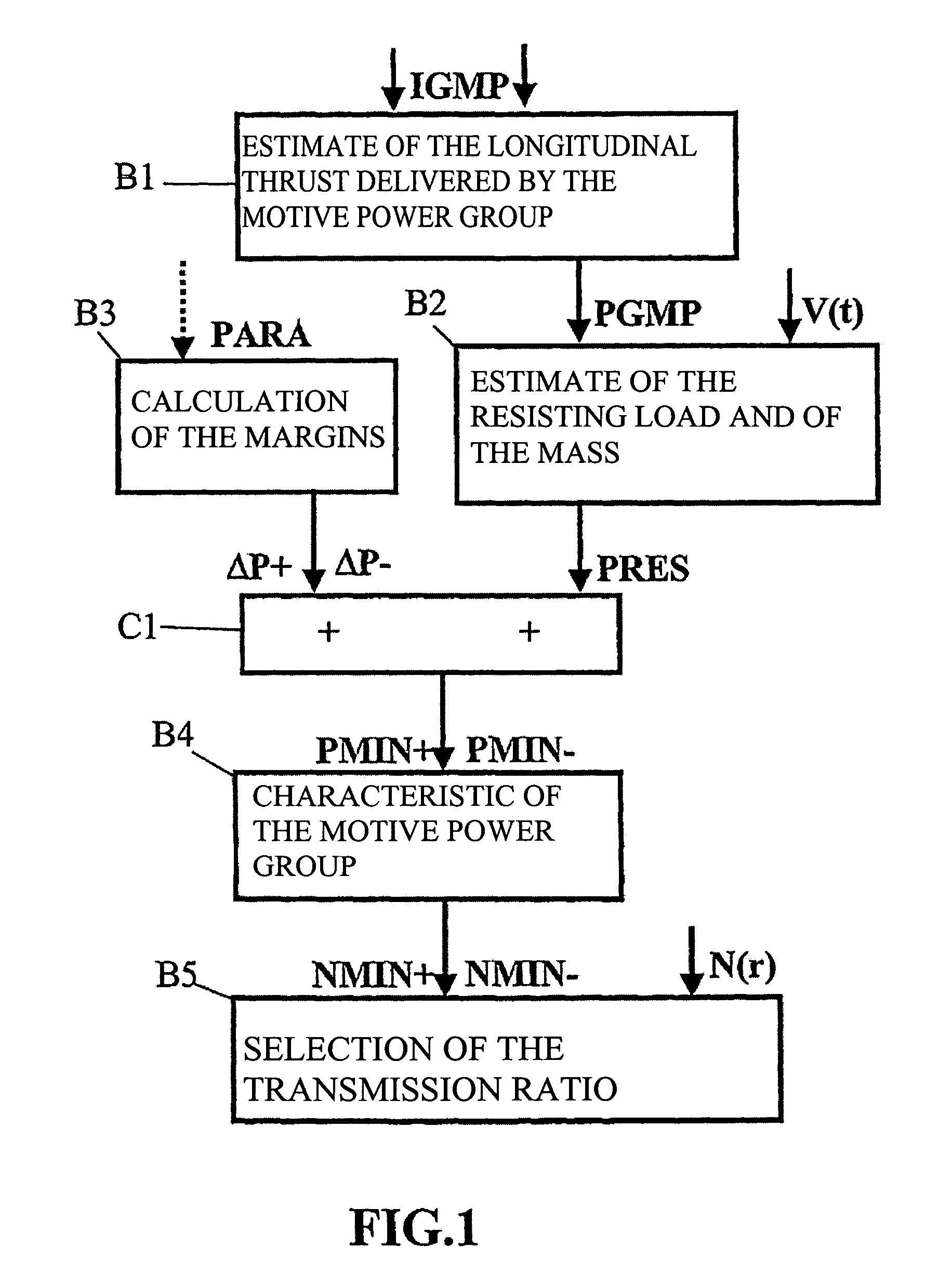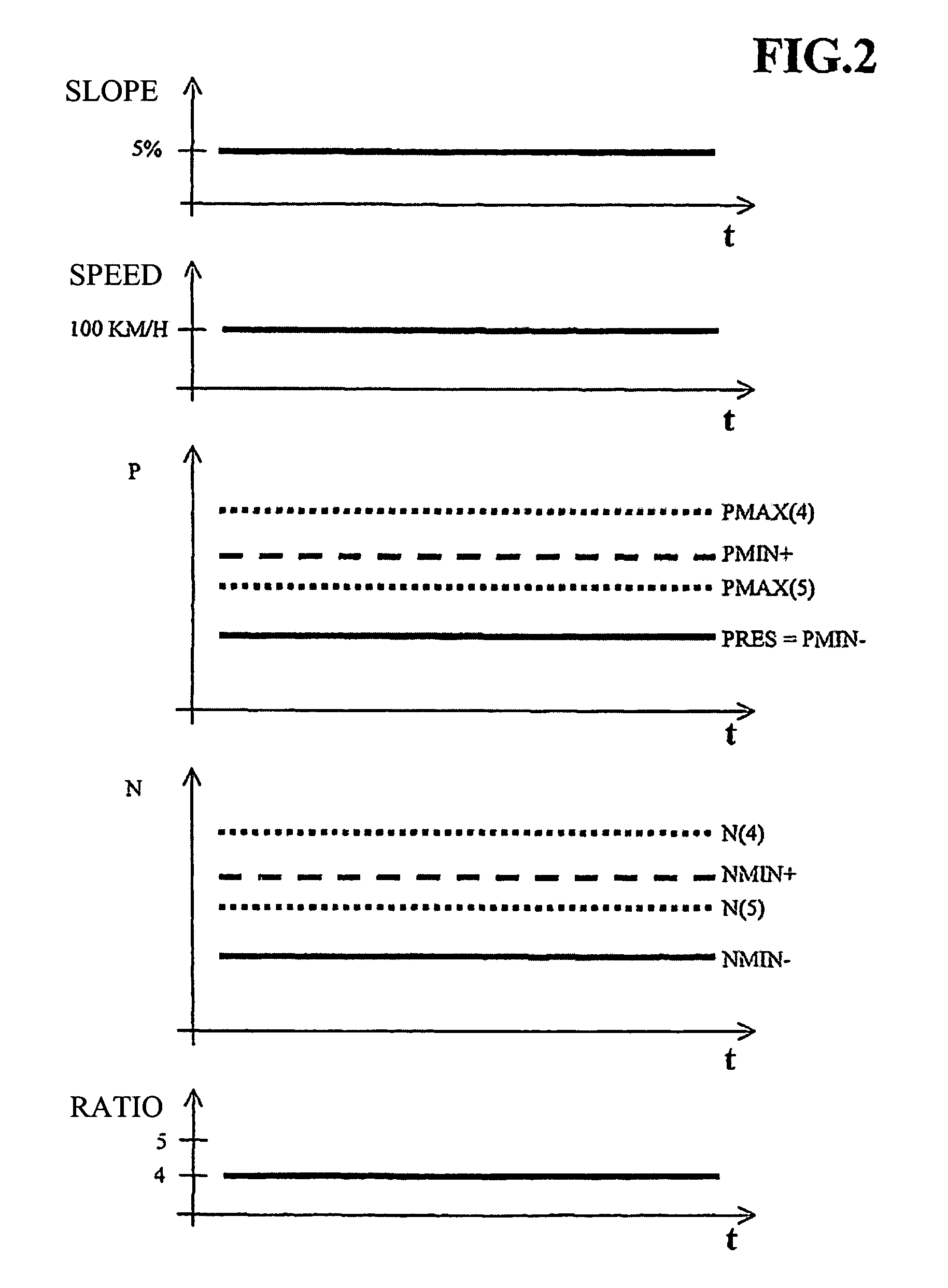Method for controlling selection of an automatic transmission gear ratio
a technology of automatic transmission and gear ratio, applied in the direction of process and machine control, hybrid vehicles, instruments, etc., can solve the problems of forceful initiation of downshift (shift to a lower ratio), insufficient anticipativeness, and inability to solve the need to anticipate downshift, etc., to eliminate the risk of hunting
- Summary
- Abstract
- Description
- Claims
- Application Information
AI Technical Summary
Benefits of technology
Problems solved by technology
Method used
Image
Examples
Embodiment Construction
[0043]In FIG. 1, the steps of the method according to the invention are represented in the form of functional blocks B1, B2, B3, C1, B4, B5, which are interconnected by arrows representing transfers of variables. The transfers of variables not originating from processing by one of the functional blocks but originating, for example, from sensors situated on the motive power group or from engine-control components are indicated by arrows whose beginning is not connected to any functional block.
[0044]The current control systems of both gasoline and diesel engines are capable of estimating the effective torque delivered by the engine by means of available sensors (speed, pressures, temperatures, air flow, etc.) and of actuator-control variables (injection time, turbo pilot control, variable intake or distribution).
[0045]Knowing the state of the transmission (gear reduction ratio) and of the coupling component (coupler, clutch or torque converter), it is possible, from the datum of the e...
PUM
 Login to View More
Login to View More Abstract
Description
Claims
Application Information
 Login to View More
Login to View More - R&D
- Intellectual Property
- Life Sciences
- Materials
- Tech Scout
- Unparalleled Data Quality
- Higher Quality Content
- 60% Fewer Hallucinations
Browse by: Latest US Patents, China's latest patents, Technical Efficacy Thesaurus, Application Domain, Technology Topic, Popular Technical Reports.
© 2025 PatSnap. All rights reserved.Legal|Privacy policy|Modern Slavery Act Transparency Statement|Sitemap|About US| Contact US: help@patsnap.com



